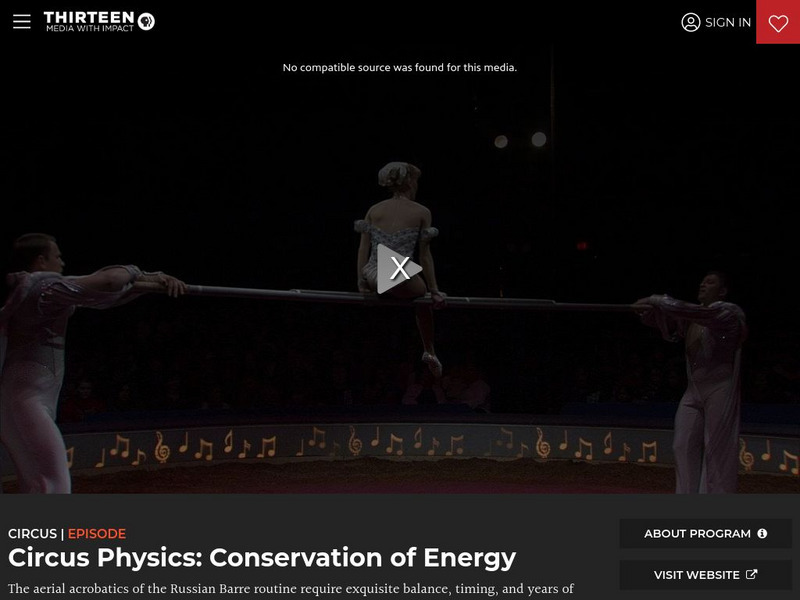PBS
Wnet: Thirteen: Circus Physics: Projectile Motion
Jugglers know that if you throw an object into the air, it will follow a curved path -- as the ball moves horizontally, gravity pulls it down vertically. Physicists call this projectile motion. In this video, you will learn why...
PBS
Wnet: Thirteen: Circus Physics: Conservation of Angular Motion
Ever notice how flying acrobats, gymnasts, ice-skaters and half-pipe snowboarders, tuck in their arms and scrunch up their bodies while spinning in the air? By keeping their arms and legs tucked close to their centers of mass, they are...
PBS
Wnet: Thirteen: Circus Physics: Pendulum Motion
Swinging back and forth, the solo trapeze is a giant pendulum, just like the one in a grandfather clock. The time it takes to swing forward, then back to where it started is called the period. Surprisingly, this time has very little to...
PBS
Wnet: Thirteen: Circus Physics: Conservation of Energy
The aerial acrobatics of the Russian Barre routine require exquisite balance, timing, and years of training. That's not enough though; conservation of energy plays a big role as well. This video explores the basics of the three common...

